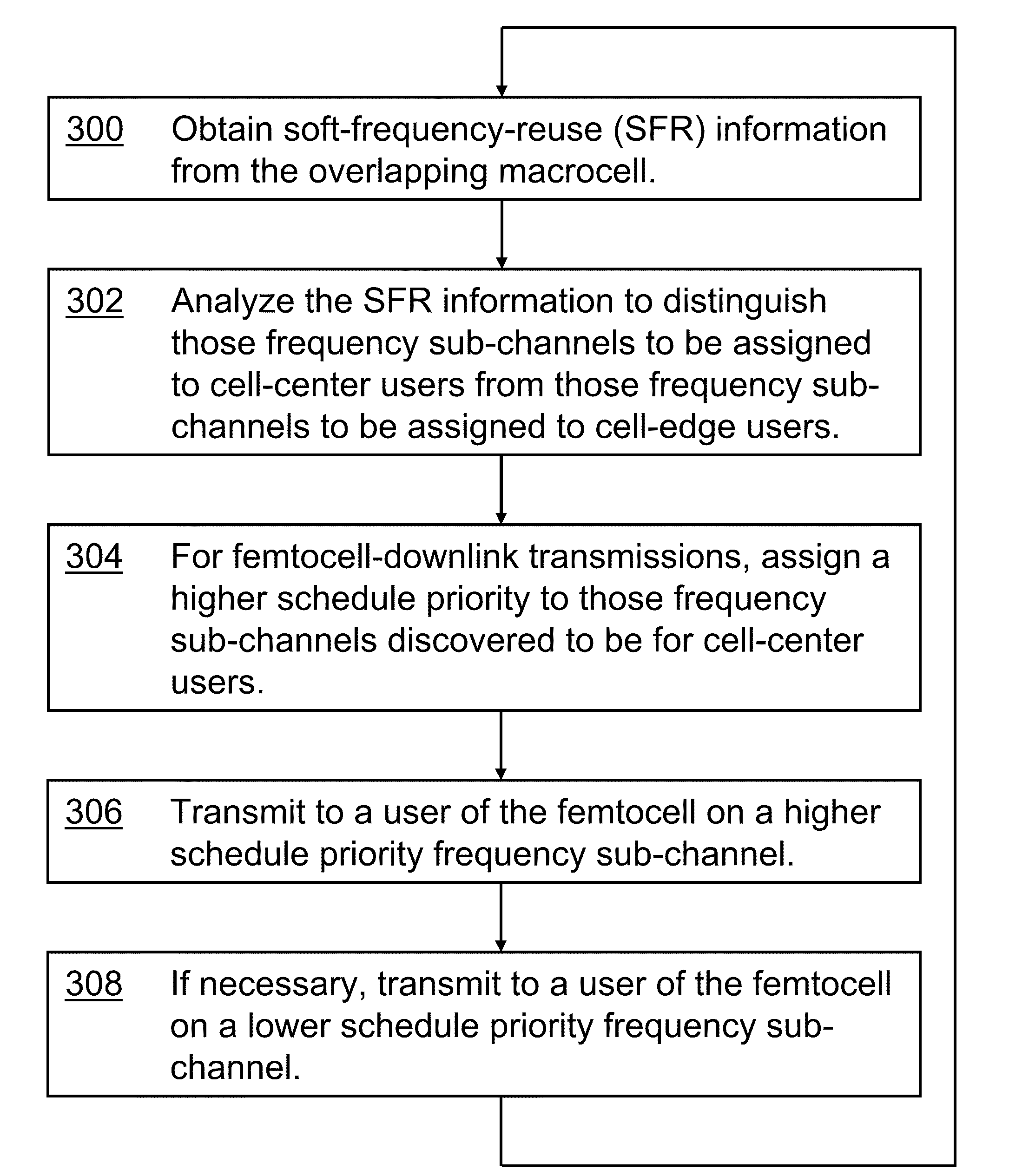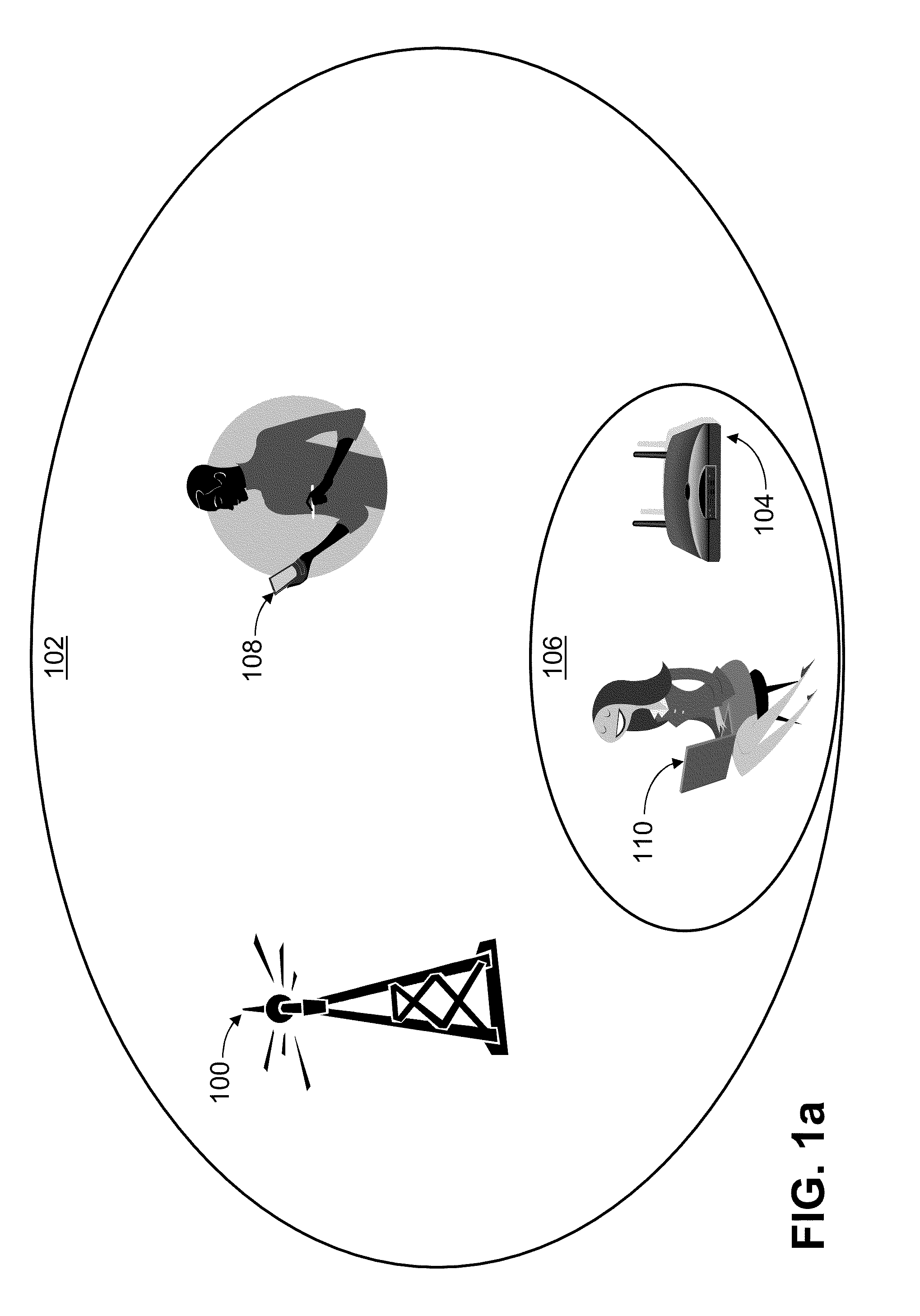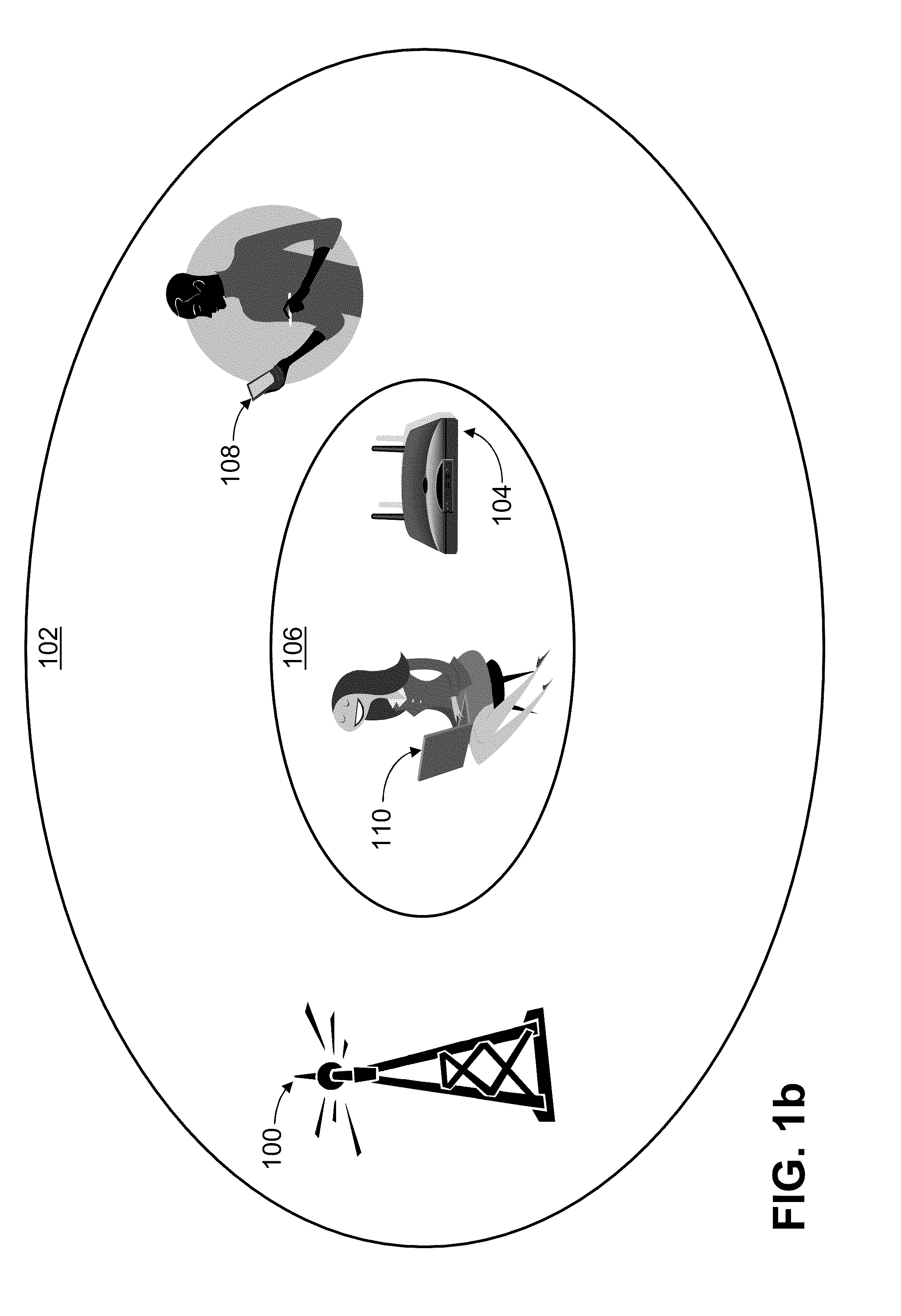In a radio network environment, reducing interference among overlapping cells
a radio network environment and cell technology, applied in the field of radio communication, can solve the problems of increasing the strength of the interfering signal, interference problems, interference, etc., and achieve the effect of reducing the interference with the transmission and the transmission power profil
- Summary
- Abstract
- Description
- Claims
- Application Information
AI Technical Summary
Benefits of technology
Problems solved by technology
Method used
Image
Examples
Embodiment Construction
[0017]Turning to the drawings, wherein like reference numerals refer to like elements, the invention is illustrated as being implemented in a suitable environment. The following description is based on embodiments of the invention and should not be taken as limiting the invention with regard to alternative embodiments that are not explicitly described herein.
[0018]FIG. 1a shows a frequency reuse communications environment. A controller 100 (with its associated infrastructure elements as known in the art) communicates over a geographical region 102. Because most frequency reuse environments in today's world are based on cellular-radio technology, the present description uses cellular terminology and calls the controller 100 a “macrocell controller” and calls the geographic region over which it communicates a “macrocell.” Please note, however, that the present invention is not limited to particular technologies and embodiments associated with the term “cellular” but applies to any fre...
PUM
 Login to View More
Login to View More Abstract
Description
Claims
Application Information
 Login to View More
Login to View More - R&D
- Intellectual Property
- Life Sciences
- Materials
- Tech Scout
- Unparalleled Data Quality
- Higher Quality Content
- 60% Fewer Hallucinations
Browse by: Latest US Patents, China's latest patents, Technical Efficacy Thesaurus, Application Domain, Technology Topic, Popular Technical Reports.
© 2025 PatSnap. All rights reserved.Legal|Privacy policy|Modern Slavery Act Transparency Statement|Sitemap|About US| Contact US: help@patsnap.com



